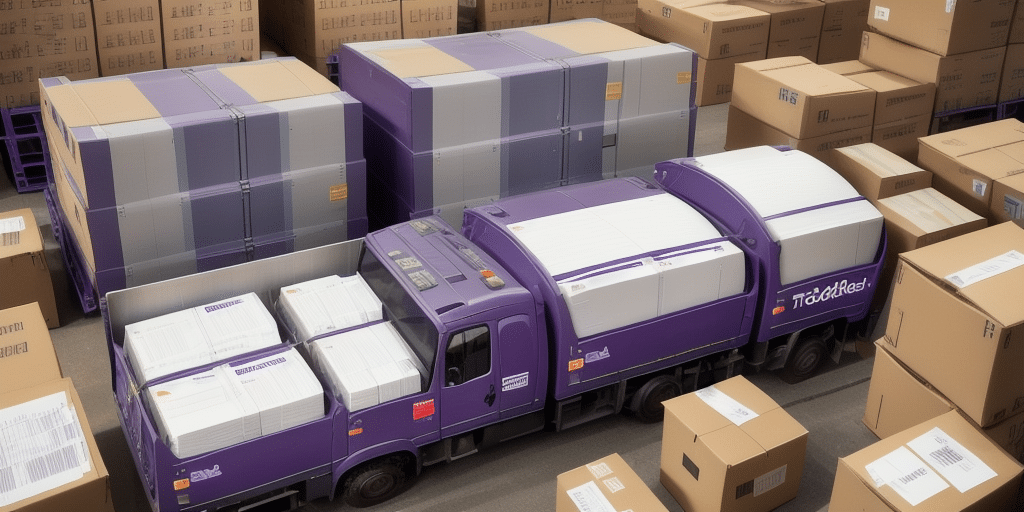Running an e-commerce store can come with its challenges, especially when it comes to managing inventory. This is particularly true for photography equipment e-commerce, where managing stock levels, shipping logistics, and customer orders can be overwhelming. That’s why choosing the right inventory management system is critical for success. However, with so many options available, it can be daunting to pick the right one. In this article, we’ll review the top 10 inventory management systems for photography equipment e-commerce, highlighting their features, pricing plans, and pros and cons. Read on to learn more.
Why Inventory Management is Crucial for Photography E-Commerce
Effective inventory management is essential for any business, and photography equipment e-commerce is no exception. Without a proper inventory management system in place, you risk overstocking on items that aren’t selling well, running out of the most in-demand products, and dealing with the logistical nightmare of handling multiple orders manually. An inventory management system that automates your inventory tracking, updates shipment status, and manages your orders can save you time, money, and headaches.
Furthermore, proper inventory management can also help you make informed decisions about your business. By tracking which products are selling well and which ones aren't, you can adjust your inventory and marketing strategies accordingly. This can help you increase your profits and grow your business.
Another benefit of inventory management is that it can help you maintain good relationships with your customers. By having accurate inventory information, you can avoid overselling products and disappointing customers with backorders or cancelled orders. This can help you build trust and loyalty with your customers, which can lead to repeat business and positive reviews.
Key Features to Consider When Choosing an Inventory Management System for Photography Equipment E-Commerce
When choosing an inventory management system for your photography equipment e-commerce business, there are a few key features you should consider. First and foremost, your inventory management system should integrate seamlessly with your e-commerce platform. It should also offer real-time inventory tracking, support multiple warehouses, have automatic reorder points, and easily handle various product variants. Additionally, consider features like shipment tracking, automated purchase orders, and customizable reports.
Another important feature to consider is the ability to set up alerts and notifications for low stock levels. This will help you avoid stockouts and ensure that you always have enough inventory to fulfill customer orders. You should also look for an inventory management system that offers barcode scanning capabilities, as this can greatly improve the accuracy and efficiency of your inventory management processes.
Finally, it's important to choose an inventory management system that is scalable and can grow with your business. As your e-commerce business expands, you may need to manage larger volumes of inventory and multiple sales channels. Make sure the system you choose can handle this growth and has the flexibility to adapt to your changing needs.
Comparison of Pricing Plans and Packages for Top 10 Inventory Management Systems
Below is a detailed comparison of the pricing plans and packages for the top 10 inventory management systems for photography equipment e-commerce. Remember to consider your specific business needs and budget when choosing an inventory management system from the following list:
1. TradeGecko
TradeGecko offers three pricing tiers: basic ($39/month), business ($79/month), and premium ($199/month). All tiers offer inventory management, order management, and warehouse management features. However, the basic tier only supports one user, while the other tiers support multiple users.
2. Zoho Inventory
Zoho Inventory offers four pricing plans: Basic ($29/month), Standard ($79/month), Professional ($249/month), and Enterprise ($499/month). All plans offer inventory management and order management features, with more advanced options ($249/month and up) supporting multiple warehouses, customized reports, and more.
3. QuickBooks Online Advanced Inventory
QuickBooks Online Advanced Inventory offers advanced inventory management features integrated into QuickBooks’ online accounting platform. Plans start at $45/month and offer real-time inventory tracking, barcode scanning, and FIFO inventory costing.
4. Brightpearl
Brightpearl offers a comprehensive inventory management system that includes order management, shipping management, and warehouse management. Pricing is customized based on business size and needs.
5. Cin7
Cin7 offers four pricing plans starting at $299/month. Features include real-time inventory tracking, support for multiple warehouses, purchase order management, and automated ordering.
6. SkuVault
SkuVault offers four pricing plans starting at $399/month. Features include inventory tracking, warehouse management, and support for multiple channels, including Amazon, eBay, and Shopify.
7. Ordoro
Ordoro offers three pricing plans starting at $59/month. Features include inventory tracking, order management, and shipping management. Higher-tier plans support more users and channels.
8. Unleashed
Unleashed offers four pricing plans starting at $85/month. Features include inventory tracking, warehouse management, and purchase order management. Higher-tier plans support more users, warehouses, and integrations.
9. Fishbowl
Fishbowl offers customized pricing plans based on business size and needs. Features include inventory tracking, order management, and warehouse management, along with manufacturing and project management features.
10. Acctivate
Acctivate offers inventory management and order management features that seamlessly integrate with QuickBooks. Pricing plans are customizable based on business needs and offer features like B2B e-commerce, advanced reporting, and more.
11. Stitch Labs
Stitch Labs offers four pricing plans starting at $799/month. Features include inventory tracking, order management, and warehouse management. Higher-tier plans support more users, warehouses, and integrations, along with advanced reporting and analytics.
12. TradeGecko Alternative
For businesses looking for a TradeGecko alternative, Skubana offers a comprehensive inventory management system with pricing starting at $999/month. Features include inventory tracking, order management, and warehouse management, along with integrations with Amazon, eBay, and Shopify.
How to Integrate Inventory Management System with Your Photography Equipment E-Commerce Store
The process of integrating your inventory management system with your e-commerce store will depend on the system and platform you choose. However, most systems offer step-by-step integration guides and tutorials to help you get started. It’s essential to ensure that your e-commerce platform is compatible with the inventory management system you choose.
One important factor to consider when integrating your inventory management system with your e-commerce store is the level of automation you want to achieve. Some systems offer real-time syncing, which means that your inventory levels will be automatically updated as soon as a sale is made. This can save you time and reduce the risk of overselling. However, real-time syncing may not be necessary for all businesses, and it may come at an additional cost.
Another consideration is the level of customization you need. Some inventory management systems offer more flexibility in terms of customizing your product listings, pricing, and shipping options. This can be particularly useful if you sell a wide range of photography equipment with varying specifications and shipping requirements. Make sure to choose a system that can accommodate your specific needs and preferences.
Benefits of Using an Inventory Management System for Your Photography Equipment E-Commerce Business
Using an inventory management system for your photography equipment e-commerce business offers several benefits, including:
- Automated tracking of stock levels, shipments, and orders
- Ability to easily manage multiple warehouses and sales channels
- Real-time data that helps you make informed business decisions
- Increased speed and accuracy of shipping and order fulfillment
- Reduced risks of overselling or understocking on items
Another benefit of using an inventory management system for your photography equipment e-commerce business is that it can help you save time and money. With automated tracking and real-time data, you can quickly identify which products are selling well and which ones are not. This allows you to adjust your inventory levels and marketing strategies accordingly, which can help you avoid overstocking on items that aren't selling and missing out on potential sales for items that are in high demand. Additionally, by streamlining your order fulfillment process, you can reduce the amount of time and resources needed to process and ship orders, which can ultimately lead to cost savings for your business.
Top 10 Inventory Management Systems: Pros and Cons
Each of the top 10 inventory management systems for photography equipment e-commerce has its pros and cons, depending on your business needs and budget. Use the following chart to compare the pros and cons of each system:
It's important to note that while these inventory management systems can greatly improve your business operations, they do require some initial setup and ongoing maintenance. It's recommended to allocate time and resources to properly implement and utilize the system to its full potential. Additionally, consider factors such as customer support, integration with other software, and scalability when making your decision.
Understanding the Different Types of Inventory Management Systems for Photography Equipment E-Commerce
Inventory management systems for photography equipment e-commerce can be categorized into three main types: cloud-based, on-premise, and hybrid. Cloud-based systems are hosted on remote servers and accessible via the internet. On-premise systems are installed locally on your computer or server. And hybrid systems combine both cloud-based and on-premise features. Understanding the different types can help you choose the right inventory management system for your business.
Cloud-based inventory management systems are becoming increasingly popular due to their flexibility and accessibility. They allow you to access your inventory data from anywhere with an internet connection, making it easy to manage your inventory on the go. Additionally, cloud-based systems often come with automatic updates and backups, reducing the risk of data loss and ensuring that you always have the latest features.
On-premise inventory management systems, on the other hand, offer greater control and security. Since the system is installed locally on your computer or server, you have complete control over your data and can customize the system to meet your specific needs. However, on-premise systems can be more expensive to set up and maintain, and may require technical expertise to manage.
How to Evaluate Your Business Needs When Choosing an Inventory Management System for Photography Equipment E-Commerce
Choosing the right inventory management system for your photography equipment e-commerce business depends on your specific needs. Consider factors such as the size of your online store, the number of warehouses you have, and your budget. Create a list of must-have features and determine which system offers the best value for your budget.
Tips for Streamlining Your Photography Equipment E-Commerce Business with the Right Inventory Management System
Here are a few tips to help you streamline your photography equipment e-commerce business with the right inventory management system:
- Regularly review and update your inventory levels
- Automate your stock replenishment process
- Segment your inventory into categories for easy tracking
- Train your staff on how to use the inventory management system
- Integrate your inventory management system with your shipping and order management systems
Conclusion
Choosing the right inventory management system for your photography equipment e-commerce business can be challenging. However, with careful consideration of your business needs and budget, as well as a thorough review of the top 10 inventory management systems, you’ll be able to find the best system to support your business growth. By streamlining your inventory management process, you’ll be able to focus on growing your business and providing exceptional customer service.









